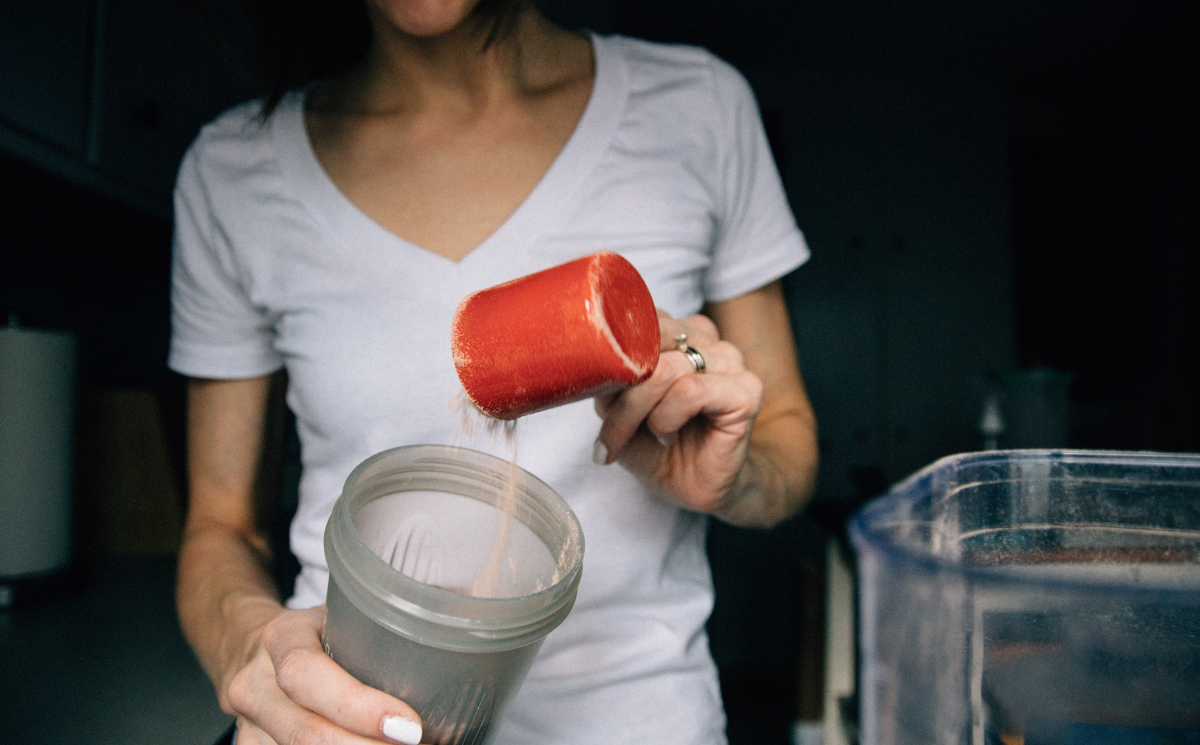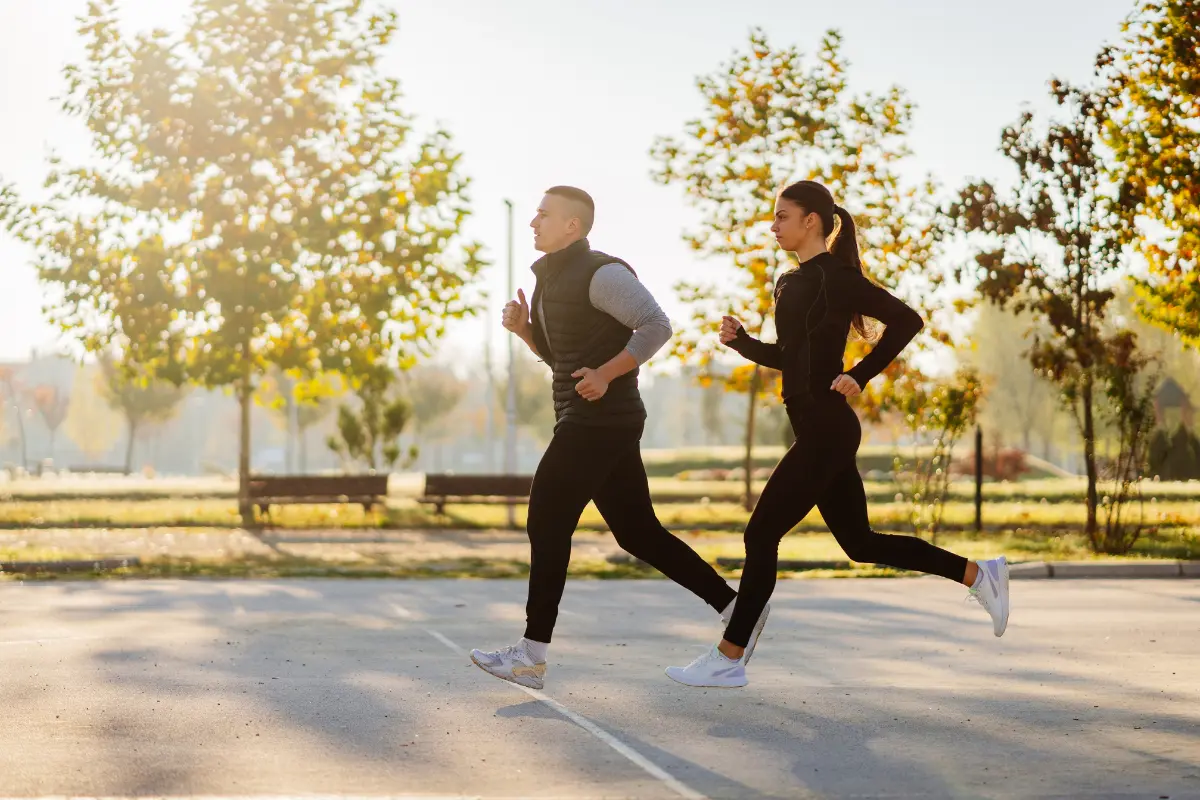
Nutrition timing can take an experienced tracker and athlete from really good to great. On the flip side, it can be the thing that takes a newer tracker and athlete from being consistent and excited about their journey to being massively confused.
But what is nutrition timing, and how can it help you achieve your performance or aesthetic goals?
What is Nutrition Timing?
Nutrition timing refers to eating an exact amount of macronutrients (proteins, carbs, and fats) at a specific time based on your workout schedule. Nailing nutrition timing can help to ensure your body has the proper fuel for your workout and recovery.
As you can probably guess, meal timing and makeup are nuanced and individualized.
Advertisement
It can also start to get a tad complicated. So, before we dig into tips and tricks for nutrition timing based on your workout schedule, take a second to read more about the WAG Nutrition Pyramid.
It is important to cover the “bottom levels” of your health, like food quality, quantity, and consistency, with your macro targets before diving into the details of meal timing. Otherwise, you’ll be spending a LOT of time and effort on something that will only move the needle the last few percent. We want to work smarter, not harder, right?
Okay, okay!
Now that I’ve done my due diligence as a nutrition coach to make sure you know where and when to focus your efforts on this whole thing let’s dive into meal timing based on your workout schedule because it does have a time and place to help you reach your goals. Plus, it can also be fun. ;)
Advertisement
Protein, Carbs, and Fats for Performance
When reading through the specific tips for nutrition timing based on your workout schedule, you’ll notice that we speak about protein, carbohydrate, and fat amounts. Here is a quick breakdown of the three macros in relation to training:
- Protein: This is the leading champ of the macros! It helps keep you full, stabilizes blood sugar, and plays a MONUMENTAL role in muscle maintenance and recovery [1]. In general, eating lean protein around your workouts is key.
Lean protein includes (but is not limited to) chicken and turkey breasts, lean beef/red meat, low-fat yogurt and cottage cheese, egg whites, white fish, and protein powder. - Carbs: Carbs are your body’s preferred source of quick energy. This does not mean that your body NEEDS carbohydrates to exercise effectively (ex, if you’re following a very low-carb or ketogenic diet). Still, when carbs are available, your body prefers to use them to fuel workouts [2].
There are both quick-digesting carbs and slower-digesting carbs. Quick-digesting carbs are higher on the Glycemic Index (GI) and include foods like fruit, white rice, cereal, potato, bread, pasta, and condiments like honey and maple syrup. Slower digesting carbs are lower on the Glycemic Index and are typically higher in fiber. These include most veggies, legumes, and whole grains. - Fats: Dietary fat helps keep you full, assists with brain functionality, carries essential vitamins and minerals around your body, and is an excellent long-term energy source. You can find dietary fats in nuts, seeds, avocados, egg yolks, olive oil, fatty fish, and meats.
As we dive in, know that you may need to experiment a bit (and get it wrong a few times) before nailing down what works for you. Keep tabs on what you eat, when, and how you feel in your workout to start noticing patterns. Then, repeat what works and scrap what doesn’t.
Your type of training (CrossFit? Running? Powerlifting? Yoga?), intensity, and individual goals must be considered when digging into specifics. A WAG coach can help you personalize the general recommendations below.
Optimizing Macros for Performance
Because overall calories needed to reach performance and body composition goals differ from person to person, thinking in ratios of proteins, carbs, and fats can be helpful.
Advertisement
Here is a quick infographic to help you visualize when and what to eat.

Here are a few important things to note:
- The closer you are to a workout, the more high-GI carbs and fewer low-GI carbs you should eat. You want your body to utilize the carbs you give quickly, and high GI carbs hit your bloodstream faster than low GI carbs.
- Protein around workouts is almost always a good idea.
- Adding fats post-workout is ideal. Depending on the workout, you could also add some to your pre-workout meal 1-2 hours before training. This is individualized, and a WAG coach can help you determine your body needs.
- An “Immediately Pre-Workout Meal” is not 100% necessary. It depends on the time of day, hunger levels, energy levels if you’re in a calorie deficit, workout intensity, and your schedule. For example, if your pre-workout meal was 2 hours before your workout and you are in a calorie deficit, a snack immediately pre-workout could be a good idea! If you ate an hour ago, hunger is low, and you feel ready to go, you can probably skip it.
- These are not hard-and-fast rules. Experiment, find what works for you, and remember the Nutrition Pyramid.
Nutrition Timing in a Caloric Deficit
Nutrition timing can have a special place in your journey when you are in a caloric deficit, want to prioritize body composition, and still want to feel as strong as possible in the gym.
With limited overall calories, nutrition timing allows you to be more precise about eating those calories. You can use meal timing to your advantage and stack your highest-carb meals around your workouts to maximize your performance and recovery efforts.
Advertisement
Dialing in nutrient timing doesn’t guarantee that you’ll always feel GREAT in the gym, but it gives you the best chance of mitigating negative impacts on training (ex, fatigue, loss of strength) while in a deficit.
Pre-Workout Nutrition: What to Eat and When
What and how much you eat before a workout depends on what time you prefer to train. Do you train in the morning, afternoon, or evening?
Best Pre-Workout Meals for Morning Workouts
If you’re down to put a little somethin’ somethin’ in your stomach before an early morning session, it likely means you don’t have much time to digest. So, it would be best to stick to quick-digesting carbs and lean protein.
If you’re hitting a CrossFit or other high-intensity workout, skip the fat, which will slow down the digestion of the foods you eat. Carbs are the way to go if you have to prioritize carbs or protein (you’re not hungry enough for both). Ensure you have quick-digesting protein (leftover lean meat or a quick protein shake) ready to eat when training finishes.
If you’re running or lifting and need more sustained energy, a BIT of healthy fat (if you know you digest it well) is fair game. Here are some suggestions:
Advertisement
- Rice cakes with peanut butter powder and honey (add a bit of regular PB if you need some healthy fat)
- A banana and whey protein shake (add a handful of almonds if you need healthy fats)
- A smoothie with fruit and yogurt (add avocado or nut butter if you need healthy fats)
- Egg white muffins and a slice of toast (add some butter if you need healthy fats)
- Overnight oats. Strawberry? Carrot cake? Pumpkin spice? Everything Bagel? We’ve got you covered (these recipes have some healthy fats already)
- Protein muffins or pre-made protein pancakes (pop ‘em in the toaster) with a quick shake
If you really can’t stomach anything, that is okay! That just means your post-workout meal is much more important, and you should aim to get this in ASAP [3].
Remember that these recipes are jumping off places. Feel free to adjust based on your macros, preferences, and what works best for your body.
The Best Pre-Workout Meals for Afternoon Workouts
If you train after lunch, give yourself enough time to digest! No one likes lots of veggies sitting in their stomach when trying to do pull-ups. If you have a few hours, you could enjoy a pre-workout lunch like:
- A lean beef burger, quinoa, arugula, and roasted veggies
- Tuna mixed with carrots, celery, cucumber, pepper, pickles, and tomatoes in a wrap and/or apple on the side
- A whole-wheat wrap or sandwich with lettuce, tomato, and turkey
If you’re in a pinch and have to work the gym into your lunch break, keep lunch a bit lighter and focus on quick-digesting carbs and lean proteins. Make breakfast and dinner higher volume meals where you get the bulk of your veggies and healthy fats.
If so, check back to the “Best Pre-Workout Meals for Morning Workouts” section for some lighter meals.
Advertisement
Best Pre-Workout Meals for Evening Workouts
Most people who train in the evening eat lunch and have one more snack before hitting the gym. This means that depending on your lunchtime, that meal can be full of veggies, protein, and healthy fats.
Best Pre-Workout Meals for Evening Workouts
Most people who train in the evening eat lunch and have one more snack before hitting the gym. Depending on your lunchtime, that meal can contain veggies, protein, and healthy fats.
Ensure your post-workout meal (likely dinner) is the most nutritious of the day. This may mean eating a bit lighter through the morning so you have more macros to play with later, especially if you’re in a deficit. Try...
- Half a bagel or a slice of toast with peanut butter powder and jelly (add a bit of regular PB if you need some healthy fat)
- A banana and whey protein shake (add a handful of almonds if you need healthy fats)
- A bit of minimally processed cereal mixed into some cottage cheese (if your body can digest it before a workout) or with a shake on the side.
Post-Workout Meals for Muscle Recovery
Getting fuel to your muscles ASAP should be the primary goal of your post-workout meal. Depending on what time you train. Let's break down specifics based on your workout routine.
Advertisement
Best Post-Workout Meals for Morning Workouts
No matter what time you work out, your post-workout meal is the day's most important meal. If you work out in the morning, this will likely be your breakfast or lunch.
If you work out at that awkward I’m-done-with-my-workout-and-already-ate-breakfast-but-it’s-too-early-to-eat-lunch time, ensure you have a post-workout snack ready.
Immediately post-workout, you need to give your body quick energy to kick-start recovery. This means more quick-digesting carbs and lean protein options. For inspiration, utilize the many options in the "Best Pre-Workout Meals for Morning Workouts" section.
If you already ate breakfast, it is a-okay to add a bit of healthy fat to your post-workout meal or snack. Your body already has some fuel in the tank from which to draw. But, if you didn’t eat anything beforehand, focus on quick-digesting carbs and protein first (think protein shake and some cereal), and then eat a more balanced meal with healthy fats again soon after.
Throughout the rest of the day, focus on balanced meals with plenty of veggies, protein, and healthy fats.
Advertisement
Best Post-Workout Meals for Afternoon Workouts
When you train in the afternoon, you’ve usually already eaten lunch and have some time until dinner. This means that your post-workout food will be a snack. Here are a few ideas...
- Rice cakes with peanut butter powder and jelly (add a bit of regular PB if you need some healthy fat)
- A banana and whey protein shake (add a handful of almonds if you need healthy fats)
- A smoothie with fruit and yogurt (add avocado or nut butter if you need healthy fats)
- Overnight oats
- Leftover dinner! Maybe you ate a turkey burger, rice, and roasted veggies?
- A whole wheat wrap with tuna, turkey, and veggies
Remember that your macro prescription will affect how big these meals can be.
Best Post Workout Meals for Evening Workouts
This meal is most likely dinner! If that is the case, we suggest a big, balanced meal. You can eat a more balanced meal because you went into your workout with a few meals (literally) under your belt. You don’t have to worry about volume since you’ve already trained. So, you can load your plate with veggies here, too. This meal could look like...
- A burger with a lettuce bun, sauteed kale, and roasted potatoes (Do you want the bun but watching carb intake? Replace the potatoes with roasted veggies!)
- Salmon with your favorite veggie over rice or quinoa
- Stir fry veggies with chicken or beef with rice or cauliflower rice
Do you train after dinner? If so (and you can’t imagine eating a meal that late at night), try to grab a shake at least and take a few bites of a carb source before hitting the pillow.
You probably noticed that a LOT of my meal suggestions looked the same no matter the time of day or what side of a workout it is on. That is because the same rules apply to any meal and any workout. Quicker digesting carbs and protein are your best friend, and fat can be added depending on your digestion and training style.
Advertisement
Wrapping It Up: What You Need to Know About Optimizing Nutrition Timing for Your Workout Routine
Did you count how often I said “general” in this piece? At LEAST five times because that is precisely what this is—a general idea of nutrition timing suggestions and tips based on your workout schedule. It is incredibly nuanced and takes much trial and error to nail down. A WAG Coach can help you find what works best for your body, given your workout style and goals.
Remember that consistency with targets, an effective training program, and learning to notice what your body is asking you for will be enough to get you where you want to go. If you're ready to take it a step further, adjusting your macro breakdown based on your workout routine could help you take the next step in your performance.
References:
- Schoenfeld, B., Aragon, A., Wilborn, C., Urbina, S., Hayward, S., & Krieger, J. (2017). Pre- versus post-exercise protein intake has similar effects on muscular adaptations. PeerJ., (5), e2825. doi: 10.7717/peerj.2825
- Kanter, M. (2017). High-quality carbohydrates and physical performance. (2018). Nutr Today, 53(1), 35-39. doi: 10.1097/NT.0000000000000238
- Aragon, A. A., & Schoenfeld B. J. (2013) Nutrient timing revisited: is there a post-exercise anabolic window? Journal of the International Society of Sports Nutrition, (10), https://doi.org/10.1186/1550-2783-10-5
Schedule a Free Intro Call
Working Against Gravity has led the macro tracking and health space for over a decade. Our team doesn’t just understand the science of nutrition—we’ve spent years mastering the art of tailoring it to fit your life. That means no cookie-cutter plans, just real strategies that have worked for over 30,000 people.
Schedule a free call with our team to learn how working with a 1-on-1 WAG coach will help you reach your goals.



